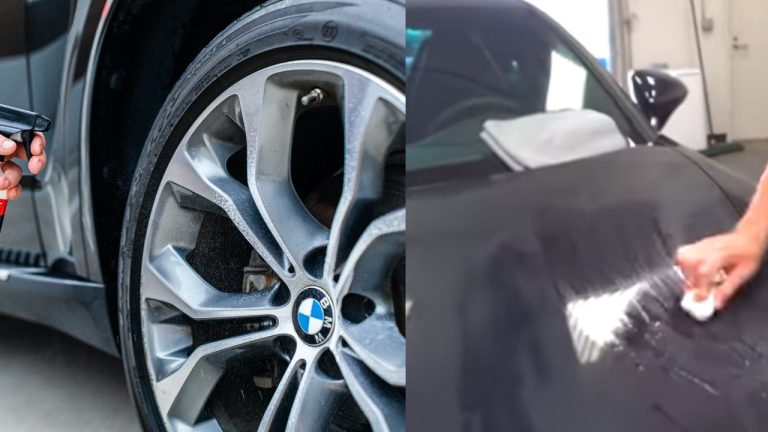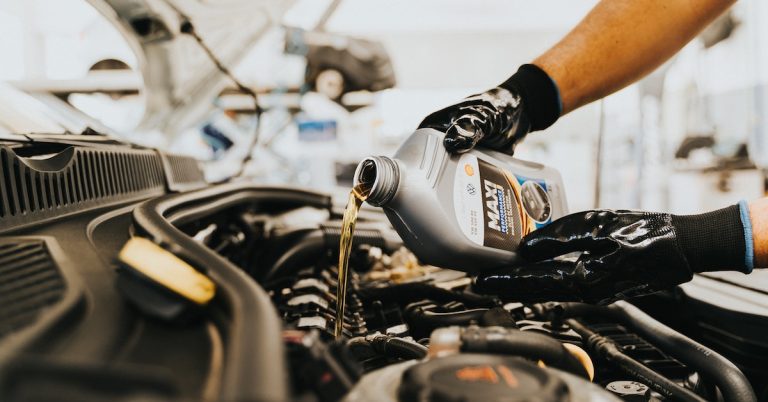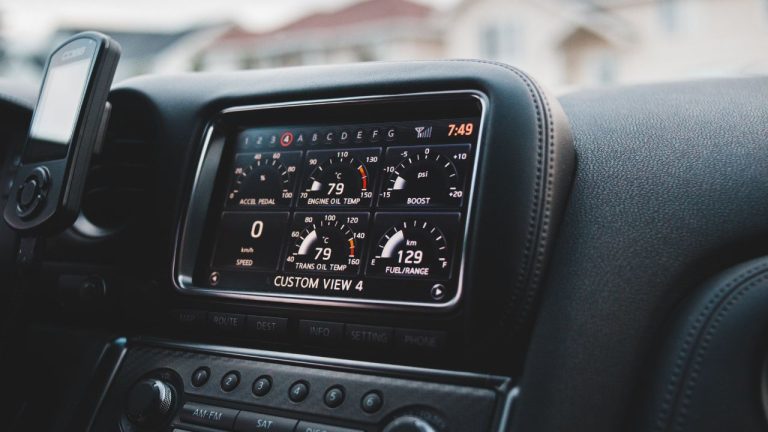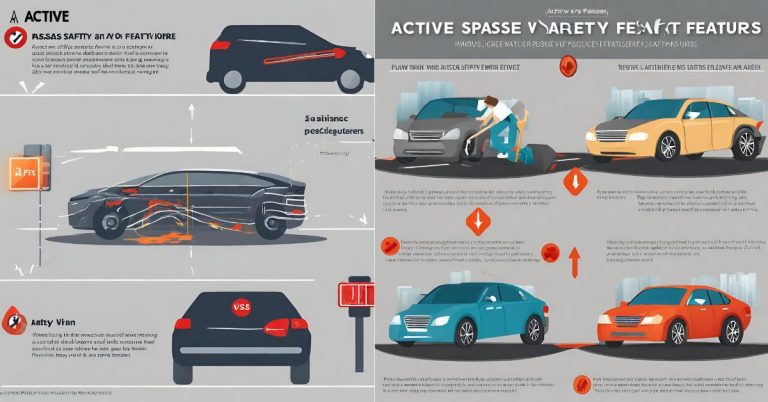“Every detail of a car’s interior, from the steering wheel to the floor mats, is meticulously designed to blend comfort, safety, and style, transforming every drive into a seamless and enjoyable journey.”
Your car is more than just a means of transportation; it’s an extension of your personality and a space where you spend significant time. Whether you’re a daily commuter, a road trip enthusiast, or a weekend warrior, the interior of your car plays a crucial role in your driving experience. From the comfort of your seats to the functionality of your dashboard, every detail matters.
In this ultimate guide, we’ll explore the essential car interior parts that can transform your vehicle into a haven of comfort, style, and efficiency. Buckle up and get ready to discover how you can elevate your ride to a whole new level!
25 Car Interior Parts With Details
The interior of a car is a complex and intricately designed space, combining functionality, comfort, and aesthetics to enhance the driving experience. Each component within the car’s interior serves a specific purpose, contributing to the overall performance, safety, and enjoyment of the vehicle.
In this comprehensive guide, we will explore 25 essential car interior parts, detailing their functions, features, and benefits. Whether you are a car enthusiast, a prospective buyer, or simply curious about the workings of your vehicle, this detailed overview will provide valuable insights into the various elements that make up a car’s interior.
1. Rear-view Mirror

The rear-view mirror is a crucial safety feature in a vehicle, providing the driver with a clear view of the area behind the car. Positioned at the top of the windshield in the center of the vehicle, this mirror allows the driver to monitor traffic conditions and make informed driving decisions.
Functions and Uses
- Rear Visibility: The primary function of the rear-view mirror is to provide visibility of the road and traffic behind the vehicle, helping the driver to make safe lane changes and reverse maneuvers.
- Safety: By enabling the driver to see approaching vehicles, the rear-view mirror helps in avoiding collisions and maintaining situational awareness.
- Monitoring Passengers: In larger vehicles like SUVs and vans, the rear-view mirror can also be used to keep an eye on rear-seat passengers.
Types of Rear-view Mirrors
- Manual Mirrors: Basic rear-view mirrors that require the driver to adjust them manually to get the correct angle.
- Day/Night Mirrors: These mirrors have a flip mechanism that reduces glare from headlights of vehicles behind at night, enhancing nighttime driving safety.
- Auto-dimming Mirrors: Equipped with sensors that detect the intensity of light from behind, these mirrors automatically adjust to reduce glare and improve visibility.
Advanced Features
- Integrated Displays: Some modern rear-view mirrors incorporate digital displays for backup cameras, navigation, and other vehicle information, providing additional assistance during driving.
- Homelink Systems: These mirrors may also include buttons that can be programmed to control garage doors, security gates, and home lighting systems.
- Compass and Temperature Readouts: Certain rear-view mirrors display directional and temperature information, adding convenience for the driver.
The rear-view mirror is an essential component for driving safety, offering crucial visibility and situational awareness. Modern enhancements have further increased its functionality, making it an indispensable feature in any vehicle.
2. Side Mirror
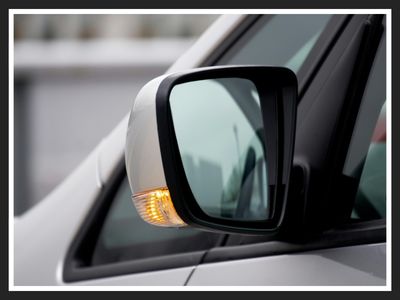
Side mirrors, also known as wing mirrors or door mirrors, are essential components of a vehicle’s safety system, providing the driver with a clear view of the sides and rear of the vehicle. Mounted on the exterior of the front doors, these mirrors play a critical role in enhancing visibility and ensuring safe driving maneuvers.
Functions and Uses
- Side and Rear Visibility: Side mirrors enable the driver to see the areas alongside and behind the vehicle, which are not visible through the rear-view mirror. This visibility is crucial for making safe lane changes and turns.
- Blind Spot Monitoring: By reflecting the adjacent lanes, side mirrors help drivers detect vehicles in their blind spots, reducing the risk of collisions.
- Parking Assistance: Side mirrors assist drivers in parking by providing a view of the curb and surroundings, helping to avoid obstacles and park accurately.
Types of Side Mirrors
- Manual Mirrors: Basic side mirrors that require manual adjustment to achieve the desired viewing angle.
- Power Mirrors: These mirrors can be adjusted electronically using controls inside the vehicle, allowing for easier and more precise positioning.
- Heated Mirrors: Equipped with heating elements, these mirrors prevent fogging and icing in cold weather, ensuring clear visibility.
- Folding Mirrors: Can be manually or electronically folded inwards to protect the mirrors from damage when the vehicle is parked.
Advanced Features
- Integrated Turn Signals: Many modern side mirrors include built-in turn signal lights, providing additional visibility to other drivers when signaling a turn or lane change.
- Blind Spot Detection: Some side mirrors are equipped with sensors that detect vehicles in the blind spot and alert the driver with visual or auditory signals.
- Auto-dimming: Similar to rear-view mirrors, auto-dimming side mirrors reduce glare from headlights of vehicles behind, improving nighttime driving safety.
- Memory Settings: In vehicles with multiple drivers, memory settings can store preferred mirror positions, automatically adjusting to the saved settings when a specific driver is identified.
Side mirrors are vital for maintaining situational awareness and ensuring safe driving. With advancements in technology, modern side mirrors offer a range of features that further enhance their functionality and convenience.
3. Sun Visor

A car’s sun visor is a simple yet essential component designed to shield the driver and passengers from the sun’s glare, improving visibility and comfort while driving. Positioned above the windshield, sun visors can be adjusted to block sunlight from different angles, making them a crucial feature for safe and comfortable driving.
Functions and Uses
- Glare Reduction: The primary function of the sun visor is to block direct sunlight, reducing glare that can impede the driver’s vision and cause eye strain.
- Improved Visibility: By minimizing glare, the sun visor helps maintain clear visibility of the road, traffic signals, and other vehicles, enhancing overall driving safety.
- Comfort: By shielding the eyes from harsh sunlight, the sun visor ensures a more comfortable driving experience, preventing distractions and discomfort.
Features
- Adjustability: Sun visors can be flipped down to block sunlight coming through the windshield or swiveled to the side window to protect against glare from the side.
- Vanity Mirrors: Many sun visors come with built-in vanity mirrors, often with lights, providing a convenient way for passengers to check their appearance.
- Storage: Some sun visors include small storage pockets or clips for holding essential items like registration documents, pens, or garage door openers.
- Extensions: Certain models have sliding extensions or additional panels that can be pulled out to cover a larger area, offering more effective protection against the sun.
Advanced Features
- Sun Visor with Technology Integration: Some modern sun visors are equipped with built-in digital displays, sensors, or connectivity features, adding to their functionality.
- Electrochromic Sun Visors: Advanced sun visors with electrochromic technology can adjust their tint automatically based on the intensity of sunlight, providing optimal glare reduction without manual adjustment.
the sun visor is an indispensable part of a vehicle’s interior, playing a key role in ensuring safety and comfort by mitigating the effects of direct sunlight. With additional features and technological advancements, sun visors continue to evolve, offering even greater utility and convenience to drivers and passengers.
4. Steering Wheel
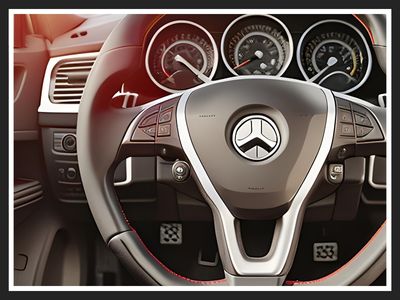
The steering wheel is a fundamental component of a vehicle, serving as the primary interface for the driver to control and navigate the car. Positioned directly in front of the driver’s seat, it allows for precise maneuvering by transmitting the driver’s input to the vehicle’s steering mechanism.
Functions and Uses
- Vehicle Control: The primary function of the steering wheel is to control the direction of the vehicle. Turning the wheel adjusts the angle of the front wheels, enabling the driver to steer the car left or right.
- Safety: The steering wheel often integrates critical safety features such as the airbag, which deploys in the event of a collision to protect the driver.
- Driver Assistance: Modern steering wheels may include controls for various driver assistance systems, like lane-keeping assist and adaptive cruise control, enhancing driving safety and convenience.
Features
- Ergonomic Design: Steering wheels are designed to provide a comfortable grip, often featuring contours and padding to reduce driver fatigue during long drives.
- Adjustability: Many steering wheels can be adjusted for height (tilt) and distance (telescoping) to suit the driver’s preference and ensure an optimal driving position.
- Integrated Controls: Modern steering wheels typically include buttons and switches to control audio systems, phone functions, cruise control, and other vehicle settings, allowing the driver to operate these features without taking their hands off the wheel.
- Heating: Some steering wheels come with built-in heating elements to keep the driver’s hands warm in cold weather.
Advanced Features
- Multifunctional Displays: Advanced steering wheels may have integrated displays that show information such as speed, navigation directions, or vehicle status, providing quick access to essential data.
- Haptic Feedback: Some steering wheels offer haptic feedback to alert the driver about lane departures or other warnings, enhancing the tactile interaction with the vehicle.
- Steering Wheel-Mounted Paddle Shifters: In performance-oriented vehicles, paddle shifters mounted on the steering wheel allow the driver to manually shift gears for a more engaging driving experience.
Innovations
- Steer-by-Wire Systems: Emerging technology in some modern vehicles replaces traditional mechanical linkages with electronic controls, allowing for more flexible and responsive steering.
- Gesture Control: Some advanced steering systems include gesture recognition, enabling the driver to control certain functions with hand movements without touching the wheel.
In summary, the steering wheel is a central component of vehicle control, combining essential functions, safety features, and modern conveniences to enhance the overall driving experience. Its design and functionality continue to evolve, incorporating advanced technologies to meet the demands of modern drivers.
5. Air Bags
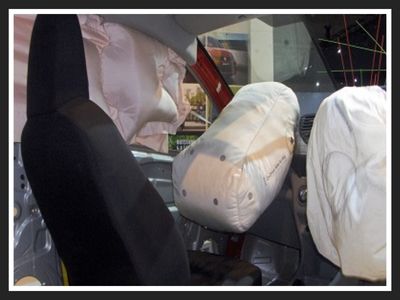
Airbags are a critical safety feature in vehicles, designed to protect occupants during collisions by providing a cushion that reduces the risk of serious injury. These inflatable devices are strategically placed throughout the vehicle and deploy upon impact to absorb the force and minimize the potential for harm.
Functions and Uses
- Impact Absorption: The primary function of airbags is to absorb the impact forces during a collision, reducing the risk of injury to the occupants by cushioning and distributing the forces more evenly.
- Protection: Airbags provide crucial protection for various parts of the body, including the head, chest, and knees, by preventing contact with hard surfaces like the dashboard, steering wheel, and doors.
Types of Airbags
- Front Airbags: These are installed in the steering wheel and dashboard, protecting the driver and front passenger during frontal collisions.
- Side Airbags: Positioned in the sides of the seats or doors, side airbags protect the torso and pelvis during side impacts.
- Curtain Airbags: Located above the side windows, curtain airbags deploy downward to shield the heads of occupants in both the front and rear seats during side impacts or rollovers.
- Knee Airbags: Installed below the dashboard, these airbags protect the lower extremities of the driver and front passenger.
- Rear Airbags: Some vehicles are equipped with rear airbags to protect passengers in the back seats during collisions.
Features
- Sensors: Airbags are connected to a network of sensors that detect the severity and location of a collision, triggering the airbags to deploy appropriately.
- Rapid Deployment: Airbags deploy in milliseconds upon impact, inflating quickly to provide immediate protection.
- Deflation: After deployment, airbags quickly deflate to avoid trapping or suffocating the occupants, providing a soft cushion and allowing for movement.
Benefits
- Life-Saving: Airbags significantly reduce the risk of severe injury or death in the event of a collision by providing a protective barrier between the occupants and the vehicle’s hard surfaces.
- Enhanced Safety: Combined with seat belts, airbags offer comprehensive protection, covering various parts of the body and enhancing overall occupant safety.
- Technological Integration: Modern airbags are integrated with advanced safety systems, such as seat belt pretensioners and occupant classification systems, to optimize deployment and protection.
Innovations
- Advanced Airbag Systems: These systems include multi-stage airbags that adjust the inflation force based on the severity of the collision and the size and position of the occupants.
- External Airbags: Some vehicles are being developed with external airbags that deploy outside the vehicle to provide additional protection during pedestrian collisions or side impacts.
- Adaptive Airbags: These airbags use sensors to detect the position and size of the occupants, adjusting the deployment force and pattern accordingly to provide personalized protection.
Airbags are a vital component of modern vehicle safety systems, designed to protect occupants by absorbing impact forces and reducing the risk of injury during collisions. With various types of airbags and continuous advancements in technology, they play a crucial role in enhancing occupant safety and saving lives.
Read Our Another Related Article
6. Ignition
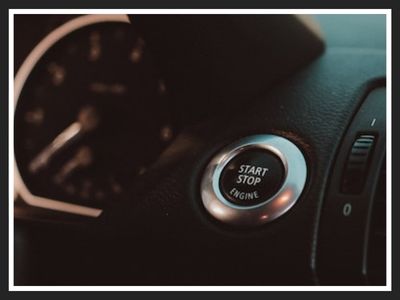
The ignition system in a car is a critical component responsible for starting the engine and enabling it to run. It involves a series of processes and components that work together to ignite the fuel-air mixture in the engine’s cylinders, allowing the engine to produce power.
Functions and Uses
- Engine Start: The primary function of the ignition system is to start the engine by creating a spark that ignites the fuel-air mixture in the engine’s cylinders.
- Power Supply: Once the engine is running, the ignition system continues to provide the necessary sparks to keep the engine operating efficiently.
Components
- Ignition Switch: The ignition switch is the driver-operated component used to start and stop the engine. It typically has several positions, such as off, accessory, on, and start.
- Battery: Provides the electrical power needed to operate the starter motor and ignition system.
- Starter Motor: An electric motor that turns the engine over when the ignition key is turned to the start position, initiating the engine’s operation.
- Ignition Coil: Converts the battery’s low voltage to the high voltage needed to create a spark at the spark plugs.
- Distributor: (In older vehicles) Distributes the high voltage from the ignition coil to the correct cylinder’s spark plug at the right time. Modern vehicles use distributor-less ignition systems (DIS) or coil-on-plug (COP) systems.
- Spark Plugs: Devices that deliver the electric spark necessary to ignite the fuel-air mixture within the engine’s cylinders.
Types of Ignition Systems
- Conventional Ignition System: Uses a distributor to direct high voltage to the spark plugs. This system is common in older vehicles.
- Electronic Ignition System: Uses electronic controls to manage the timing and distribution of the spark, improving efficiency and reliability.
- Distributor-less Ignition System (DIS): Eliminates the need for a mechanical distributor by using multiple ignition coils. Each coil serves one or more cylinders, enhancing reliability and performance.
- Coil-on-Plug (COP) System: Each spark plug has its own ignition coil mounted directly on top of it, providing more precise control and reducing energy loss.
Features
- Immobilizer: Many modern vehicles have an immobilizer system integrated with the ignition to prevent unauthorized starting of the engine.
- Keyless Entry and Push-Button Start: Advanced ignition systems allow for keyless entry and starting of the vehicle with a push-button, adding convenience and security.
- Remote Start: Some vehicles are equipped with remote start systems, enabling the engine to be started from a distance using a key fob or smartphone app.
Innovations
- Smart Ignition Systems: Incorporate advanced electronics and sensors to adapt the ignition process to varying conditions, such as engine load and temperature, for optimal performance.
- Integration with Hybrid and Electric Vehicles: In hybrid and electric vehicles, the ignition system is integrated with the vehicle’s electronic control systems to manage the operation of both the internal combustion engine and electric motors.
In summary, the ignition system is essential for starting and running a vehicle’s engine, involving a complex interplay of components that have evolved to provide enhanced reliability, efficiency, and security. With ongoing advancements, modern ignition systems continue to improve vehicle performance and driver convenience.
Read Our Another Related Article
7. Emergency flashers Button
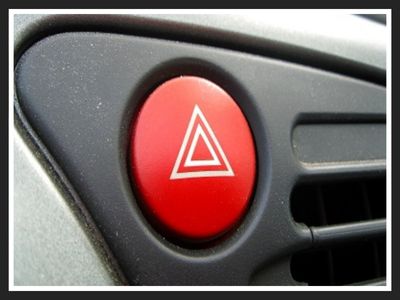
The emergency flashers button, also known as the hazard lights button, is a critical safety feature in vehicles. It activates the vehicle’s hazard lights, causing all turn signal lights to flash simultaneously, signaling a warning to other drivers.
Functions and Uses
- Alerting Other Drivers: The primary function of the emergency flashers button is to alert other drivers to potential hazards, such as a stationary vehicle, a traffic accident, or a sudden slowdown in traffic.
- Vehicle Breakdown: When a vehicle breaks down or experiences a mechanical failure, activating the emergency flashers informs other motorists of the vehicle’s immobility, reducing the risk of collisions.
- Roadside Emergencies: The flashers are used when a vehicle is pulled over on the side of the road, enhancing visibility to other drivers and ensuring safety during roadside assistance or tire changes.
- Driving in Adverse Conditions: In poor visibility conditions like fog, heavy rain, or snow, the emergency flashers can be used to increase the vehicle’s visibility to other drivers.
Proper Use
- When to Use: The emergency flashers should be used in situations where the vehicle is stopped on the road or roadside, during vehicle breakdowns, or when driving in adverse weather conditions that severely limit visibility.
- When Not to Use: Hazard lights should not be used while driving normally, as they can confuse other drivers regarding the vehicle’s intentions and reduce the effectiveness of the turn signals.
the emergency flashers button is an essential safety feature that enhances vehicle visibility and warns other drivers of potential hazards. Its ease of use and critical role in emergency situations make it a vital component of modern vehicle safety systems.
8. Air Ventilation
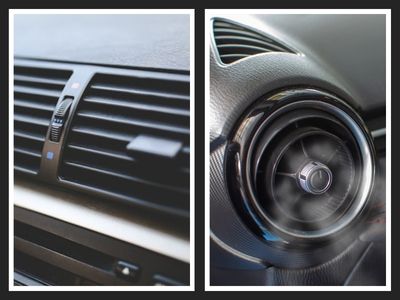
Car air ventilation systems are designed to regulate the temperature, humidity, and air quality inside the vehicle, ensuring a comfortable and healthy environment for the occupants.
Functions and Uses
- Temperature Control: The ventilation system helps maintain a desirable temperature inside the car. It works in conjunction with the heating and air conditioning (HVAC) system to provide warm or cool air as needed.
- Air Quality: The system filters incoming air to remove dust, pollen, and other contaminants, improving the air quality inside the vehicle. Some advanced systems also include ionizers or air purifiers.
- Humidity Regulation: By controlling the airflow and temperature, the ventilation system can help manage the humidity levels inside the car, preventing the windows from fogging up and ensuring clear visibility.
- Odor Removal: Ventilation helps to expel unpleasant odors from inside the car, bringing in fresh air from outside.
Components
- Vents: Air vents are strategically placed throughout the car’s interior to distribute air evenly. They can be adjusted to direct the airflow to specific areas.
- Blower Motor: The blower motor forces air through the ventilation system, allowing it to circulate throughout the vehicle.
- Filters: Cabin air filters trap dust, pollen, and other particles, ensuring that the air entering the vehicle is clean.
- Ducts: These channels direct the flow of air from the blower motor to the various vents in the vehicle.
- Climate Control Unit: This unit allows the driver and passengers to adjust the temperature, airflow direction, and fan speed to their preferences.
Advanced Features
- Dual-Zone and Multi-Zone Climate Control: These systems enable different areas of the vehicle to be set to different temperatures, providing personalized comfort for all passengers.
- Automatic Climate Control: Automatically adjusts the temperature and airflow based on preset preferences and sensor inputs, maintaining a consistent and comfortable environment.
- Air Quality Sensors: Detect pollutants or high levels of carbon dioxide and adjust the ventilation settings to ensure optimal air quality.
In summary, car air ventilation systems are vital for maintaining comfort, health, and safety within the vehicle by regulating temperature, humidity, and air quality.
09. Speedometer
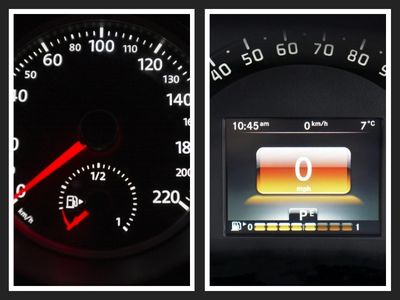
The speedometer is a key instrument on a vehicle’s dashboard that displays the current speed at which the vehicle is traveling. It helps the driver maintain appropriate speeds and adhere to traffic regulations, contributing to road safety and driving efficiency.
Functions and Uses
- Speed Monitoring: The primary function of the speedometer is to provide real-time information about the vehicle’s speed, allowing the driver to stay within legal speed limits and adjust driving speed as needed.
- Driving Safety: By keeping track of the vehicle’s speed, the speedometer helps the driver maintain a safe speed, reducing the risk of accidents caused by speeding or driving too slowly.
- Performance Management: For performance-oriented driving, the speedometer aids in managing speed to optimize fuel efficiency and vehicle performance.
Types of Speedometers
- Analog Speedometers: These traditional speedometers use a needle and dial to indicate speed. The needle moves across a scale marked with speed increments.
- Digital Speedometers: Digital speedometers display speed as a numerical value on a digital screen. They are often part of modern digital dashboards.
- GPS Speedometers: These speedometers use GPS technology to calculate and display the vehicle’s speed, offering high accuracy regardless of the vehicle’s wheel size or tire condition.
Features
- Speed Indicator: Both analog and digital speedometers prominently display the vehicle’s speed in miles per hour (mph), kilometers per hour (km/h), or both.
- Odometer Integration: Most speedometers are integrated with an odometer, which records the total distance the vehicle has traveled.
- Trip Meter: Many speedometers include a trip meter, which can be reset to measure the distance traveled during a specific trip.
- Backlighting: Speedometers are typically backlit for visibility in low-light conditions, ensuring the driver can always read the speed.
Advanced Features
- Heads-Up Display (HUD): Some vehicles offer a HUD that projects the speed and other important information onto the windshield, allowing the driver to keep their eyes on the road.
- Speed Warning Systems: Modern speedometers may include warning systems that alert the driver when they exceed a pre-set speed limit.
- Integration with Navigation Systems: Speedometers in advanced vehicles can integrate with GPS and navigation systems to provide real-time speed limit information and suggest optimal speeds for efficiency and safety.
In summary, the speedometer is an essential instrument that provides critical information about the vehicle’s speed, enhancing driving safety, efficiency, and compliance with traffic laws. With ongoing advancements, speedometers continue to evolve, offering greater precision and additional features to improve the overall driving experience.
10. Fuel gauge
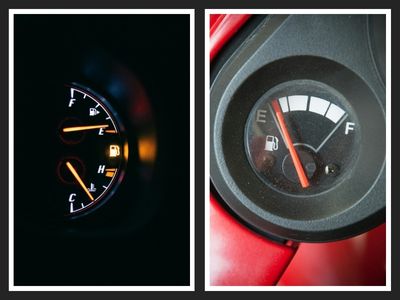
The fuel gauge is an essential instrument in a vehicle’s dashboard that indicates the amount of fuel remaining in the fuel tank. It helps the driver monitor fuel levels to avoid running out of fuel and plan refueling stops appropriately.
Functions and Uses
- Fuel Monitoring: The primary function of the fuel gauge is to display the current level of fuel in the vehicle’s tank, allowing the driver to keep track of fuel consumption.
- Refueling Alerts: By showing the fuel level, the gauge alerts the driver when the fuel is low, prompting timely refueling to prevent the vehicle from running out of fuel.
- Fuel Management: Helps in managing and optimizing fuel usage, especially on long trips or in areas with fewer refueling options.
Components
- Fuel Tank Sending Unit: Located inside the fuel tank, this unit consists of a float connected to a variable resistor. As the fuel level changes, the position of the float changes, altering the resistance and sending a signal to the gauge.
- Fuel Gauge Indicator: This is the display on the dashboard that shows the fuel level, typically marked with “F” (full) and “E” (empty) indicators and intermediate marks.
- Low Fuel Warning Light: A built-in warning light that illuminates when the fuel level drops below a certain threshold, alerting the driver to refuel soon.
Types of Fuel Gauges
- Analog Fuel Gauges: These traditional gauges use a needle to indicate the fuel level on a dial marked with “F” and “E” and sometimes quarter marks (¼, ½, ¾).
- Digital Fuel Gauges: Modern vehicles often feature digital displays that show the fuel level as a percentage or with bars, providing a more precise reading.
Proper Use and Maintenance
- Regular Checks: Regularly check the fuel gauge, especially before long trips, to ensure you have sufficient fuel.
- Respond to Alerts: Pay attention to low fuel warnings and refuel promptly to avoid running out of fuel.
- Service and Calibration: Ensure that the fuel gauge and sending unit are functioning correctly by having them checked during regular vehicle maintenance.
Benefits
- Preventing Fuel Shortages: By monitoring the fuel level, the gauge helps prevent the inconvenience and potential hazards of running out of fuel.
- Fuel Efficiency Management: Helps drivers manage fuel consumption and plan refueling stops efficiently, especially during long trips.
- Maintenance Indicator: Consistently monitoring fuel levels can help detect potential issues with fuel consumption or leaks if the fuel depletes unusually quickly.
In summary, the fuel gauge is a crucial component that provides real-time information about the fuel level in the vehicle, aiding in effective fuel management and preventing fuel shortages. With advancements in technology, fuel gauges continue to improve in accuracy and integration, offering drivers enhanced convenience and safety.
11. Tachometer
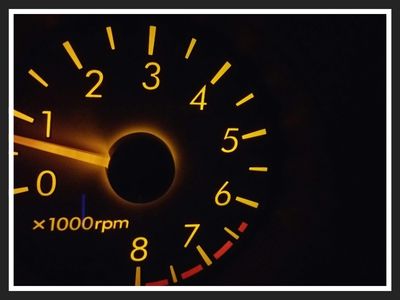
A car’s tachometer is a gauge found on the dashboard that measures and displays the engine’s RPM (revolutions per minute). This instrument provides the driver with real-time information about the engine’s performance and operating speed.
Functions and Uses
- Engine Monitoring: The tachometer helps drivers monitor the engine’s RPM, ensuring it operates within optimal ranges. This is crucial for maintaining engine health and preventing over-revving, which can cause damage.
- Shift Timing: In vehicles with manual transmissions, the tachometer assists drivers in determining the best shift points for smooth and efficient gear changes. By observing the RPM levels, drivers can shift gears at the appropriate times to maximize performance and fuel efficiency.
- Performance Driving: For enthusiasts and performance drivers, the tachometer provides critical information for maximizing acceleration and achieving optimal performance during spirited driving or racing conditions.
- Idle and Diagnostic Information: The tachometer also indicates the engine’s idle speed, helping diagnose potential issues such as misfires or irregular idling that might indicate mechanical problems.
Design and Features
- Analog vs. Digital: Tachometers can be analog, with a needle pointing to the current RPM, or digital, displaying RPM as numerical values. Some modern vehicles incorporate both types in their instrument clusters.
- Redline Indicator: Most tachometers include a redline, marked by a red section on the gauge, indicating the maximum safe RPM. Exceeding this limit can risk severe engine damage.
- Integration: In addition to the standalone tachometer, many advanced vehicles integrate tachometer readings into heads-up displays (HUDs) or digital dashboards, providing drivers with more flexible viewing options.
Overall, the tachometer is an essential instrument that enhances driving efficiency, performance, and engine longevity by providing crucial data on engine speed.
12. Water Temperature Gauge
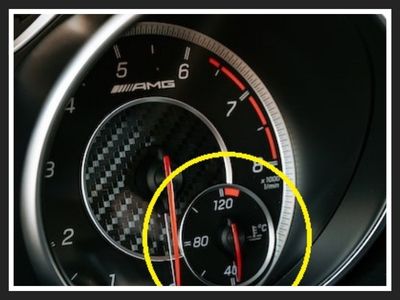
Water Temperature Gauge
The water temperature gauge is an important instrument on a vehicle’s dashboard that displays the temperature of the engine coolant. It helps the driver monitor the engine’s operating temperature, ensuring it stays within a safe range to prevent overheating and engine damage.
Functions and Uses
- Temperature Monitoring: The primary function of the water temperature gauge is to indicate the temperature of the engine coolant, allowing the driver to monitor the engine’s operating temperature.
- Overheating Prevention: By providing real-time temperature readings, the gauge helps prevent engine overheating, which can cause significant damage and lead to costly repairs.
- Engine Performance Management: Maintaining the correct engine temperature ensures optimal performance, fuel efficiency, and longevity.
Components
- Temperature Sensor: Located in the engine block or cylinder head, the sensor measures the temperature of the engine coolant and sends this information to the gauge.
- Temperature Gauge Indicator: The display on the dashboard that shows the coolant temperature, typically marked with a “C” (cold) on one end and “H” (hot) on the other, with a normal operating range in between.
- Warning Light: Many vehicles have a warning light that illuminates when the coolant temperature reaches a critical level, alerting the driver to take immediate action.
Types of Temperature Gauges
- Analog Temperature Gauges: Traditional gauges that use a needle to indicate the coolant temperature on a dial, providing a continuous reading.
- Digital Temperature Gauges: Modern gauges that display the temperature as a numerical value or with digital bars, offering precise readings.
Benefits
- Engine Protection: By monitoring the coolant temperature, the gauge helps protect the engine from overheating and potential damage.
- Optimal Performance: Ensuring the engine operates within the recommended temperature range contributes to optimal performance and fuel efficiency.
- Preventive Maintenance: Regular monitoring of the coolant temperature can help detect issues with the cooling system early, allowing for timely maintenance and repairs.
The water temperature gauge is a vital instrument that provides real-time information about the engine’s coolant temperature, helping to prevent overheating and ensure optimal engine performance. With advancements in technology, these gauges have become more accurate and integrated, enhancing their role in vehicle maintenance and safety.
13. Oil Temperature Gauge
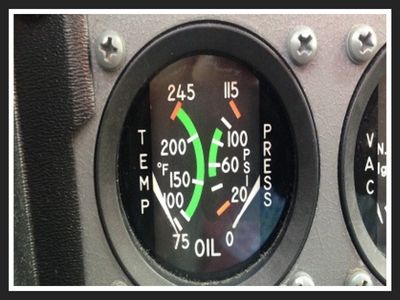
The oil temperature gauge is a crucial instrument on a vehicle’s dashboard that displays the temperature of the engine oil. It helps the driver monitor the engine’s operating conditions, ensuring the oil remains at an optimal temperature for efficient lubrication and engine performance.
Functions and Uses
- Temperature Monitoring: The primary function of the oil temperature gauge is to indicate the temperature of the engine oil, allowing the driver to monitor the engine’s thermal condition.
- Lubrication Management: By providing real-time temperature readings, the gauge ensures that the engine oil is neither too cold nor too hot, maintaining effective lubrication and preventing engine wear.
- Performance Optimization: Proper oil temperature is critical for optimal engine performance, fuel efficiency, and longevity. The gauge helps in achieving and maintaining this balance.
Components
- Oil Temperature Sensor: Located in the oil pan, oil filter housing, or engine block, the sensor measures the temperature of the engine oil and sends this information to the gauge.
- Oil Temperature Gauge Indicator: The display on the dashboard shows the oil temperature, often marked with numerical values or a scale indicating the normal operating range.
- Warning Light: Many vehicles have a warning light that illuminates when the oil temperature exceeds a safe threshold, alerting the driver to potential overheating issues.
Types of Oil Temperature Gauges
- Analog Oil Temperature Gauges: These traditional gauges use a needle to indicate the oil temperature on a dial, providing a continuous reading.
- Digital Oil Temperature Gauges: Modern gauges display the temperature as a numerical value or with digital bars, offering precise readings.
Benefits
- Engine Protection: By monitoring the oil temperature, the gauge helps protect the engine from overheating and potential damage due to insufficient lubrication.
- Optimal Performance: Ensuring the engine oil operates within the recommended temperature range contributes to optimal engine performance and fuel efficiency.
- Preventive Maintenance: Regular monitoring of the oil temperature can help detect issues with the oil cooling system early, allowing for timely maintenance and repairs.
The oil temperature gauge is an essential instrument that provides real-time information about the engine’s oil temperature, helping to ensure effective lubrication and prevent overheating. With advancements in technology, these gauges have become more accurate and integrated, enhancing their role in vehicle maintenance and safety.
14. Glove Compartment
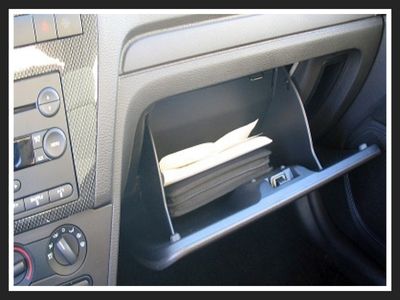
The glove compartment, also known as the glove box, is a storage compartment located in the dashboard of a vehicle, typically in front of the front passenger seat. It is used for storing small items that drivers and passengers may need quick and convenient access to while traveling.
Functions and Uses
- Storage: The primary function of the glove compartment is to provide a convenient storage space for items such as vehicle registration and insurance documents, owner’s manual, maps, and other small personal belongings.
- Organization: Helps keep the vehicle organized by providing a designated spot for commonly used items, preventing clutter in the passenger area.
Features
- Lockable Door: Many glove compartments come with a lockable door, providing a secure place to store valuable items when the vehicle is unattended.
- Illumination: Some glove compartments include an interior light that automatically turns on when the compartment is opened, making it easier to find items in low-light conditions.
- Dividers and Trays: Many modern glove compartments have built-in dividers, trays, or additional pockets to help organize the contents and maximize storage space.
- Cooler Function: In some high-end vehicles, the glove compartment is equipped with a cooling function, allowing it to be used as a mini-fridge to keep beverages and snacks cool.
The glove compartment is a practical and convenient storage space in a vehicle, providing easy access to important documents and personal items while helping to keep the interior organized. With features like lockable doors, illumination, and advanced security options, it enhances both convenience and safety for drivers and passengers.
15. Emergency brake handle
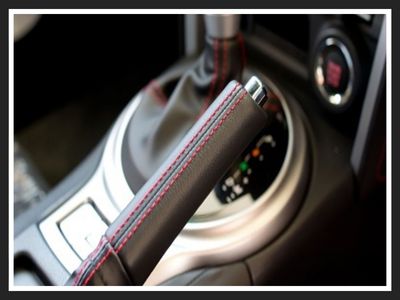
The emergency brake handle, also known as the parking brake or handbrake, is a manual braking mechanism located within reach of the driver’s seat in a vehicle. It serves as an additional safety feature to secure the vehicle when parked and as an emergency brake in case of brake system failure.
Functions and Uses
- Parking Brake: The primary function of the emergency brake handle is to secure the vehicle when parked. By applying the brake, it prevents the vehicle from rolling away, especially on inclines or uneven surfaces.
- Emergency Brake: In emergency situations, such as brake failure or hydraulic system malfunction, the emergency brake can be used to stop the vehicle safely.
- Hill Starts: It assists in starting off on a hill by preventing the vehicle from rolling backward before the engine power engages the drivetrain.
Components
- Handle or Lever: The emergency brake handle is typically a lever or pull handle located between the driver’s seat and the center console or on the floor next to the driver’s seat.
- Cable System: When the handle is engaged, it pulls a cable connected to the rear brakes, applying force to the brake shoes or pads and holding them in place.
- Release Button: To disengage the emergency brake, there is usually a button or lever that must be pressed or pulled while releasing the handle.
Features
- Locking Mechanism: Many emergency brake handles have a locking mechanism that holds the brake in place once engaged, ensuring the vehicle remains stationary.
- Indicator Light: Some vehicles are equipped with an indicator light on the dashboard that illuminates when the emergency brake is engaged, reminding the driver to release it before driving.
- Safety Release: In modern vehicles, the emergency brake handle is designed with a safety release mechanism that prevents accidental engagement or disengagement.
Benefits
- Safety: The emergency brake provides an additional layer of safety by preventing unintended movement of the vehicle and serving as a backup braking system in emergencies.
- Parking Stability: It helps stabilize the vehicle when parked on steep slopes or slippery surfaces where the regular brakes alone may not provide sufficient holding power.
- Emergency Preparedness: Knowing how to use the emergency brake effectively can be crucial in emergencies or situations requiring quick stops.
Innovations
- Electronic Parking Brake: Some modern vehicles replace the traditional handbrake with an electronic parking brake (EPB) operated by a button or switch, offering convenience and advanced functionality.
- Integrated Systems: Emergency brake systems are increasingly integrated with vehicle stability control and other safety systems to enhance overall vehicle control and safety.
The emergency brake handle is an essential safety feature in vehicles, providing parking stability and serving as an emergency brake when needed. Proper use and maintenance ensure its effectiveness in securing the vehicle and contributing to overall driving safety. With technological advancements, the emergency brake continues to evolve, offering enhanced functionality and integration with modern vehicle systems.
16. Gear Stick
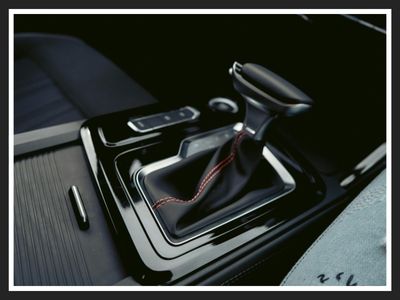
The gear stick, also known as the gear lever, gearshift, or shifter, is a crucial component in a vehicle used to change gears. It allows the driver to control the transmission system, enabling the vehicle to operate efficiently across various speeds and driving conditions.
Functions and Uses
- Gear Selection: The primary function of the gear stick is to allow the driver to manually select different gears. This is essential for managing the vehicle’s speed and torque to match driving conditions, such as starting, accelerating, climbing hills, and cruising.
- Transmission Control: It provides direct control over the vehicle’s transmission, allowing for smoother and more responsive gear changes, which is particularly important in manual transmission vehicles.
- Driving Modes: In automatic vehicles, the gear stick is used to select different driving modes such as Park (P), Reverse (R), Neutral (N), and Drive (D).
Components
- Shift Knob: The top part of the gear stick that the driver grips to change gears. It often has the gear pattern engraved or printed on it.
- Shift Lever: The lever itself, which is connected to the transmission system. In manual transmissions, it’s directly linked to the gearbox via a series of linkages.
- Shift Boot: A protective cover around the base of the gear stick, often made of rubber or leather, that prevents dirt and debris from entering the gear mechanism.
- Shift Gate: In automatic transmissions, the shift gate is a track that guides the gear stick through the various gear positions.
Types of Gear Sticks
- Manual Transmission Gear Stick: Requires the driver to manually engage and disengage the clutch using a clutch pedal while shifting gears.
- Automatic Transmission Gear Stick: Simplifies gear changes by automatically selecting the appropriate gear based on the vehicle’s speed and engine load, with options for selecting specific driving modes.
- Sequential Gear Stick: Common in performance and racing vehicles, allowing the driver to shift up or down through gears in a sequential order.
The gear stick is a fundamental component that allows the driver to control the vehicle’s transmission system. Whether in manual or automatic vehicles, it plays a critical role in ensuring smooth gear transitions, optimal performance, and efficient driving. With continuous advancements in automotive technology, gear sticks are evolving to offer more convenience, precision, and integration with modern vehicle systems.
17. Cup or beverage holder
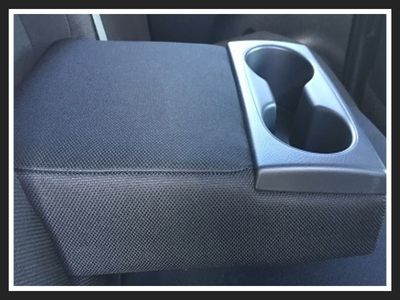
The car cup or beverage holder is a small but essential interior accessory designed to securely hold cups, bottles, or cans while driving. Typically located within easy reach of the driver and passengers, these holders enhance convenience and comfort during travel.
Types of Cup Holders
- Fixed Cup Holders: Built into the vehicle’s console, door panels, or seatbacks, providing a permanent and stable place for beverages.
- Retractable Cup Holders: Can be folded away when not in use, often integrated into the dashboard, center console, or armrests to save space.
Benefits
- Enhanced Comfort: Having a secure place for beverages makes long drives more comfortable, allowing passengers to stay hydrated and refreshed.
- Improved Organization: Helps keep the vehicle’s interior organized by providing a specific place for drinks, reducing clutter.
- Reduced Distractions: Securely holding drinks minimizes the risk of spills and distractions, contributing to safer driving conditions.
Car cup or beverage holders are small but vital accessories that enhance convenience, safety, and comfort during travel. With various designs and features available, they accommodate different beverage sizes and types, helping to keep the vehicle’s interior organized and spill-free. Regular maintenance and the use of appropriate inserts ensure their effective functionality, contributing to a more enjoyable driving experience.
18. Door Lock Controls

Car door lock controls are essential components of a vehicle’s security and convenience systems, allowing the driver and passengers to lock and unlock the doors. These controls are typically located on the door panels, center console, or integrated into the key fob, enhancing both safety and ease of access.
Functions and Uses
- Locking and Unlocking: The primary function of door lock controls is to lock and unlock the vehicle’s doors, securing the vehicle when parked and allowing entry when needed.
- Child Safety: Many vehicles feature child safety locks on the rear doors, which can be engaged using the door lock controls to prevent children from opening the doors from the inside.
- Central Locking System: In modern vehicles, the door lock controls often operate a central locking system, allowing the driver to lock or unlock all doors simultaneously with a single button.
Types of Door Lock Controls
- Manual Locks: Older vehicles or basic models may have manual locks operated by pulling or pushing a lock tab located on each door.
- Power Locks: Most modern vehicles feature power locks operated by electronic buttons located on the door panels or center console, providing convenient control.
- Remote Keyless Entry: Many vehicles come with remote key fobs that allow the driver to lock or unlock the doors from a distance, often with additional features like trunk release or panic alarm.
- Keyless Entry Systems: Advanced systems use smart keys or key cards that unlock the doors automatically when the key is in proximity to the vehicle, enhancing convenience and security.
Car door lock controls are vital for vehicle security and convenience, providing the means to lock and unlock doors easily and efficiently. With various types ranging from manual locks to advanced keyless entry systems, these controls play a crucial role in enhancing both the safety and usability of modern vehicles. Continuous innovations in this area aim to provide even greater security, convenience, and integration with other vehicle systems.
Read Our Another Related Article
19. Car Seat
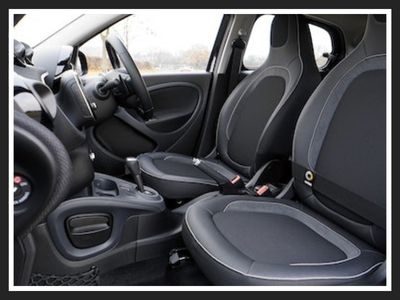
Car seats are fundamental components of a vehicle’s interior designed to provide comfort, support, and safety for the driver and passengers. They play a crucial role in enhancing the driving experience by ensuring proper posture, reducing fatigue, and incorporating safety features to protect occupants in the event of an accident.
Functions and Uses
- Comfort and Support: Car seats are ergonomically designed to offer maximum comfort and support for occupants during travel, minimizing fatigue on long journeys.
- Safety: Modern car seats integrate safety features such as seat belts, airbags, and head restraints to protect occupants during collisions and sudden stops.
- Adjustability: Seats can be adjusted in multiple ways, including height, recline, lumbar support, and sometimes heating and cooling, to cater to individual preferences and enhance comfort.
- Child Safety: Specially designed infant car seats and booster seats are used to provide added protection for young children, ensuring they are securely restrained.
Types of Car Seats
- Standard Seats: Basic seats found in most vehicles, offering standard comfort and safety features.
- Bucket Seats: Individually contoured seats that provide more lateral support, commonly found in sports cars and high-performance vehicles.
- Bench Seats: A single, continuous seat that spans the width of the vehicle, typically found in older cars and some trucks.
- Infant Car Seats: Designed specifically for babies, these seats offer enhanced protection and can be rear-facing or convertible for different stages of a child’s growth.
- Booster Seats: Used for older children, booster seats elevate the child to ensure the seat belt fits properly across their chest and lap.
Car seats are essential for providing comfort, support, and safety in vehicles. With a range of types and advanced features, they cater to the diverse needs of drivers and passengers. Proper use and maintenance ensure their effectiveness and longevity, while continuous innovations promise to enhance the driving experience even further.
Read Our Another Related Article
- How To Install Safety 1st Car Seat Front-Facing
- How To Install Baby Rear-Facing Car Seat With A Base
- How To Make Back Seat Comfortable For Road Trip
20. Seat Belt
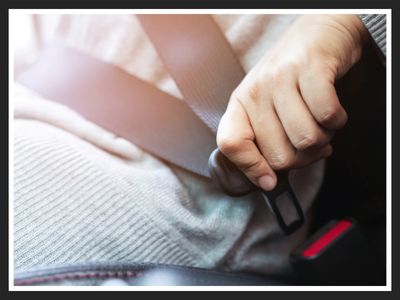
A car seat belt is a critical safety feature designed to secure the occupants of a vehicle in their seats, reducing the risk of injury during sudden stops or collisions. By restraining the body, seat belts help prevent passengers from being thrown forward or ejected from the vehicle, significantly enhancing overall safety.
Functions and Uses
- Restraint: The primary function of a seat belt is to keep the occupants securely in their seats, preventing excessive movement during a crash or sudden deceleration.
- Force Distribution: Seat belts distribute the forces of a collision across the stronger parts of the body, such as the chest and pelvis, reducing the likelihood of serious injuries.
- Occupant Positioning: By keeping passengers in the optimal position, seat belts ensure that airbags can work effectively, providing additional protection.
- Legal Requirement: Wearing a seat belt is legally mandated in most countries, with fines and penalties for non-compliance.
Types of Seat Belts
- Lap Belt: A belt that goes over the waist. Common in older vehicles and some rear center seats.
- Three-Point Belt: The most common type, which has a lap belt and a shoulder strap that secures both the upper and lower body. It’s standard in most modern vehicles.
- Automatic Seat Belt: Automatically positions itself around the passenger when the door is closed and the engine starts. Less common in newer models.
- Seat Belt Pretensioner: Tightens the belt in the event of a crash, removing slack to better secure the occupant.
- Inflatable Seat Belt: Incorporates an airbag within the belt to distribute crash forces over a larger area of the body, providing additional protection.
Benefits
- Safety: Seat belts are proven to save lives and reduce injuries by keeping occupants restrained during accidents.
- Enhanced Airbag Effectiveness: Proper use of seat belts ensures that airbags deploy correctly and provide maximum protection.
- Legal Compliance: Wearing seat belts helps drivers and passengers comply with traffic laws and avoid fines.
- Injury Prevention: By preventing ejection from the vehicle and reducing the impact forces on occupants, seat belts significantly lower the risk of serious injury.
Car seat belts are essential for vehicle safety, significantly reducing the risk of injury or death in accidents. They work by restraining occupants, distributing crash forces, and ensuring proper positioning for airbag deployment. With advancements in technology, seat belts continue to evolve, providing even greater protection and comfort for vehicle occupants. Proper use and regular maintenance of seat belts are crucial to maximize their effectiveness.
Read Our Another Related Article
21. Headrest
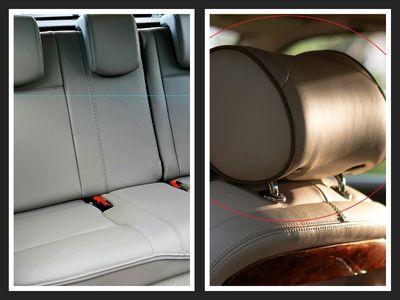
The car headrest, also known as a head restraint, is an important safety and comfort feature located at the top of each seat. Designed to support the occupant’s head and neck, headrests play a crucial role in preventing whiplash injuries during rear-end collisions.
Functions and Uses
- Neck and Head Support: Provides support for the head and neck, reducing strain and improving comfort, especially on long journeys.
- Whiplash Prevention: Helps prevent whiplash injuries by limiting the backward movement of the head during a rear-end collision.
- Comfort Enhancement: Adds to the overall comfort of the vehicle’s seating by offering a place to rest the head.
Types of Headrests
- Fixed Headrests: These are built into the seat and cannot be adjusted. They are designed to offer standard protection and support.
- Adjustable Headrests: Can be moved up or down to accommodate the height of different passengers, providing personalized comfort and safety.
- Active Headrests: Automatically move forward in the event of a rear-end collision to minimize the risk of whiplash injuries.
- Integrated Headrests: Seamlessly built into the seat design, often found in sports cars and luxury vehicles, offering a sleek and uniform look.
Features
- Height Adjustability: Many headrests can be adjusted vertically to align with the occupant’s head, enhancing both comfort and safety.
- Tilt Adjustment: Some headrests can be tilted to provide better support for the head and neck.
- Removable Headrests: Can be removed for cleaning, replacement, or to accommodate certain child safety seats.
- Material and Padding: Often made with soft, durable materials and ample padding to enhance comfort during long drives.
Benefits
- Enhanced Safety: Properly adjusted headrests significantly reduce the risk of whiplash injuries during rear-end collisions.
- Improved Comfort: Provides a resting place for the head, reducing fatigue and discomfort on long trips.
- Customizable Fit: Adjustable headrests allow for a tailored fit, accommodating passengers of various heights and preferences.
- Aesthetic Appeal: Contributes to the overall look and feel of the car’s interior, often designed to match the seat upholstery.
The car headrest is a vital component for both safety and comfort in a vehicle. By supporting the head and neck, headrests help prevent whiplash injuries and reduce strain during long journeys. With various types and adjustable features available, they can be tailored to meet the needs of different passengers. Regular maintenance and proper adjustment of headrests ensure they provide maximum benefit, contributing to a safer and more comfortable driving experience.
Read Our Another Related Article
22. Accelerator

The accelerator, also known as the gas pedal, is a crucial control in a vehicle that allows the driver to regulate the engine’s power and speed. Located on the floor of the driver’s side, the accelerator is typically operated with the right foot.
Functions and Uses
- Speed Control: The primary function of the accelerator is to control the vehicle’s speed. Pressing down on the accelerator increases the engine’s power, causing the vehicle to accelerate. Releasing the pedal reduces power and slows the vehicle.
- Engine Power Regulation: It regulates the amount of fuel and air mixture entering the engine, thus controlling the engine’s power output and performance.
- Driving Maneuvers: Essential for performing various driving maneuvers, such as overtaking, merging onto highways, and navigating through traffic.
Components
- Pedal: The part that the driver presses with their foot. It is connected to the vehicle’s throttle control mechanism.
- Throttle Control: In older vehicles, this is typically a mechanical linkage that controls the throttle valve in the engine. In modern vehicles, it’s often an electronic throttle control (ETC) system, where the pedal position is monitored by sensors and communicated to the engine control unit (ECU).
- Return Spring: Ensures the pedal returns to its original position when not pressed, providing a consistent and responsive feel.
The accelerator is a vital control in any vehicle, allowing the driver to regulate speed and engine power. With advancements in technology, modern accelerators offer precise electronic control, enhancing both performance and fuel efficiency. Proper use and maintenance of the accelerator are crucial for safe and efficient driving.
23. Brake Pedal
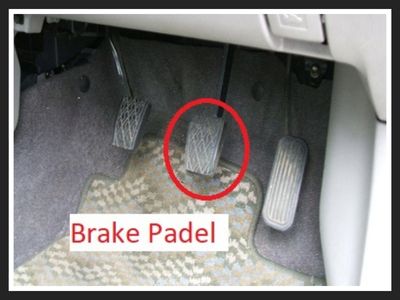
The brake pedal is a fundamental control in a vehicle that allows the driver to reduce speed, stop, or maintain control of the vehicle while driving. Located on the floor to the left of the accelerator, the brake pedal is typically operated with the right foot.
Functions and Uses
- Speed Reduction: Pressing the brake pedal decreases the vehicle’s speed by engaging the braking system.
- Stopping: The brake pedal is used to bring the vehicle to a complete stop.
- Control: Helps the driver maintain control during maneuvers such as slowing down for turns, navigating traffic, and driving downhill.
- Safety: Essential for emergency stopping and avoiding collisions.
Components
- Pedal: The part that the driver presses with their foot.
- Brake Booster: A device that amplifies the force applied to the brake pedal, making it easier to engage the brakes.
- Master Cylinder: Converts the mechanical force from the pedal into hydraulic pressure.
- Brake Lines: Transport the hydraulic fluid to the brake calipers or wheel cylinders.
- Brake Calipers/Wheel Cylinders: Apply pressure to the brake pads or shoes, creating friction with the brake rotors or drums to slow down the vehicle.
Features
- Anti-lock Braking System (ABS): Prevents the wheels from locking up during heavy braking, maintaining traction and control.
- Brake Assist: Increases braking pressure during emergency stops to shorten stopping distance.
- Electronic Brake-force Distribution (EBD): Optimizes the distribution of braking force between the front and rear wheels for better stability.
- Regenerative Braking: In hybrid and electric vehicles, part of the braking energy is converted back into electrical energy and stored in the battery.
The brake pedal is a critical component for vehicle safety and control, enabling drivers to reduce speed, stop, and manage their vehicles in various conditions. Modern advancements have enhanced the functionality and efficiency of braking systems, making them more reliable and effective. Proper use and maintenance of the brake pedal and associated components are essential for safe driving.
24. Clutch Pedal
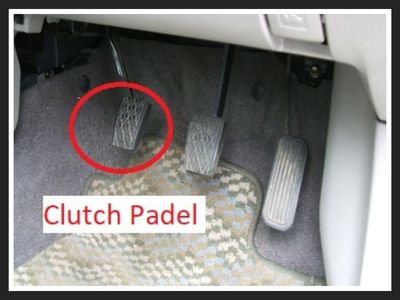
The clutch pedal is a crucial control in manual transmission vehicles, allowing the driver to engage and disengage the engine from the transmission system. Located to the left of the brake pedal, the clutch pedal is operated with the left foot.
Functions and Uses
- Engaging and Disengaging the Engine: Pressing the clutch pedal disengages the engine from the transmission, allowing the driver to change gears or come to a stop without stalling the engine.
- Gear Shifting: Essential for smooth shifting between gears. When the clutch pedal is pressed, the connection between the engine and transmission is interrupted, enabling the driver to select a different gear.
- Starting and Stopping: Helps in smoothly starting the vehicle from a standstill and stopping without jerking.
Components
- Pedal: The part pressed by the driver’s foot.
- Clutch Master Cylinder: Converts the mechanical pressure from the pedal into hydraulic pressure.
- Clutch Slave Cylinder: Transfers the hydraulic pressure to the clutch fork.
- Clutch Fork: Moves the release bearing towards or away from the clutch pressure plate.
- Clutch Disc and Pressure Plate: Engage and disengage the engine’s power to the transmission.
Features
- Hydraulic System: Most modern clutches use a hydraulic system for smooth and effortless operation.
- Adjustable Pedal: In some vehicles, the clutch pedal position can be adjusted to suit the driver’s preference and comfort.
- Dual-Clutch Systems: Some high-performance and advanced vehicles use dual-clutch systems for faster and more efficient gear changes.
The clutch pedal is essential for the operation of manual transmission vehicles, providing the driver with the ability to engage and disengage the engine from the transmission for smooth gear changes and control. Proper use and maintenance of the clutch system ensure a smooth and efficient driving experience. Innovations continue to enhance the performance and durability of clutch systems, making them more reliable and user-friendly.
25. Floor Mats

Car floor mats are essential interior accessories designed to protect the vehicle’s floor from dirt, wear, and damage. They enhance the aesthetic appeal of the car’s interior while providing practical benefits, such as ease of cleaning and maintaining a tidy environment.
Types of Floor Mats
- Rubber Mats: Durable and easy to clean, rubber mats are ideal for heavy-duty protection against water, mud, and snow. They are often used in all-weather conditions.
- Carpet Mats: Made of plush materials, carpet mats provide a more luxurious look and feel. They are suitable for lighter use and are available in various colors and designs.
- All-Weather Mats: These mats combine the durability of rubber with specific designs to trap water, mud, and debris, offering comprehensive protection in all conditions.
- Custom-Fit Mats: Designed specifically for the make and model of the vehicle, custom-fit mats ensure maximum coverage and protection with a tailored fit.
Benefits
- Interior Protection: Floor mats provide a barrier against dirt, moisture, and wear, keeping the car’s interior in good condition.
- Easy Maintenance: They can be easily removed and cleaned, making it simple to keep the car’s interior clean and fresh.
- Enhanced Comfort: Carpeted mats add a layer of cushioning, improving the comfort of the car’s interior.
- Personalization: With a variety of styles and materials available, floor mats allow car owners to personalize their vehicle’s interior to match their taste.
Car floor mats are vital accessories that protect the vehicle’s interior from dirt, wear, and damage while enhancing comfort and aesthetic appeal. Available in various materials and designs, they offer practical benefits such as easy maintenance and increased safety. Proper use and regular maintenance of floor mats ensure they provide effective protection and contribute to a clean and comfortable driving environment.
Final Word
In summary, the interior components of a car, particularly the seats and headrests, are vital for ensuring both comfort and safety for all occupants. From ergonomic designs and advanced adjustability to essential safety features and innovative technologies, these elements collectively enhance the overall driving experience. As automotive technology continues to evolve, the focus on improving car interiors remains a priority, aiming to provide greater comfort, convenience, and protection for drivers and passengers alike.


